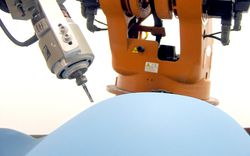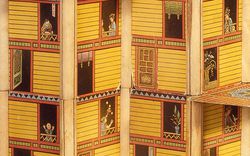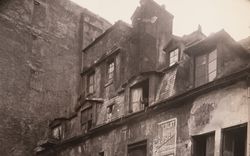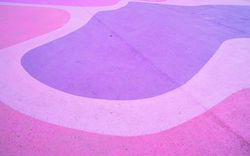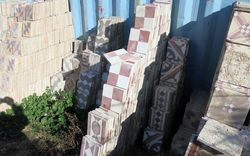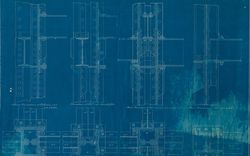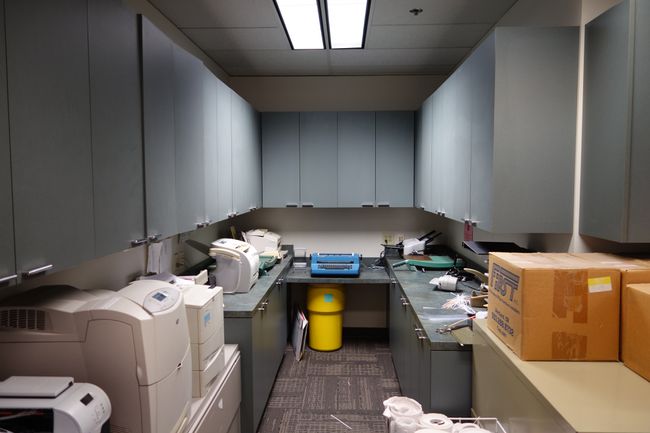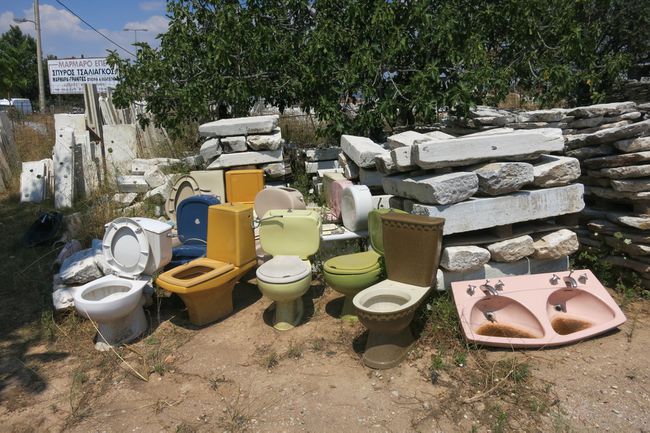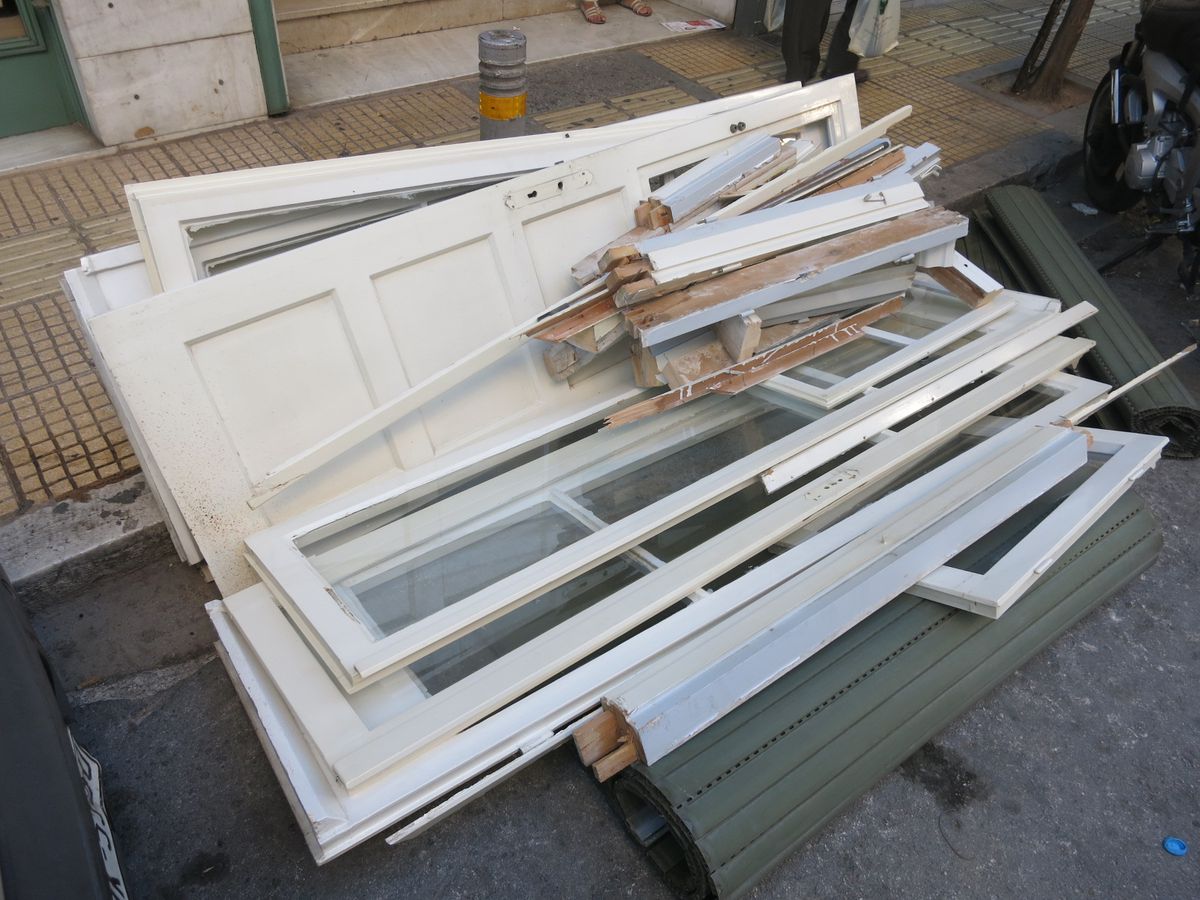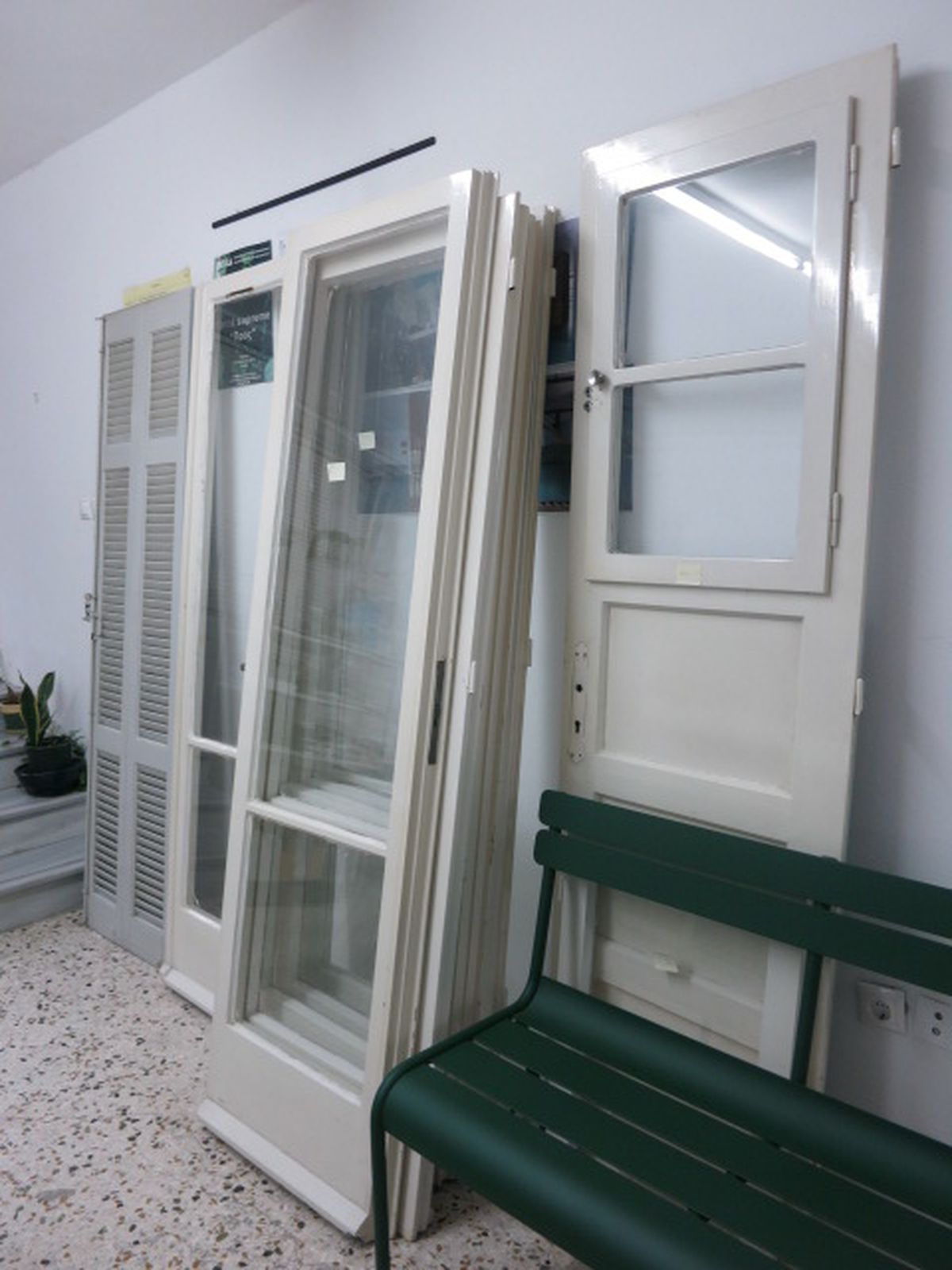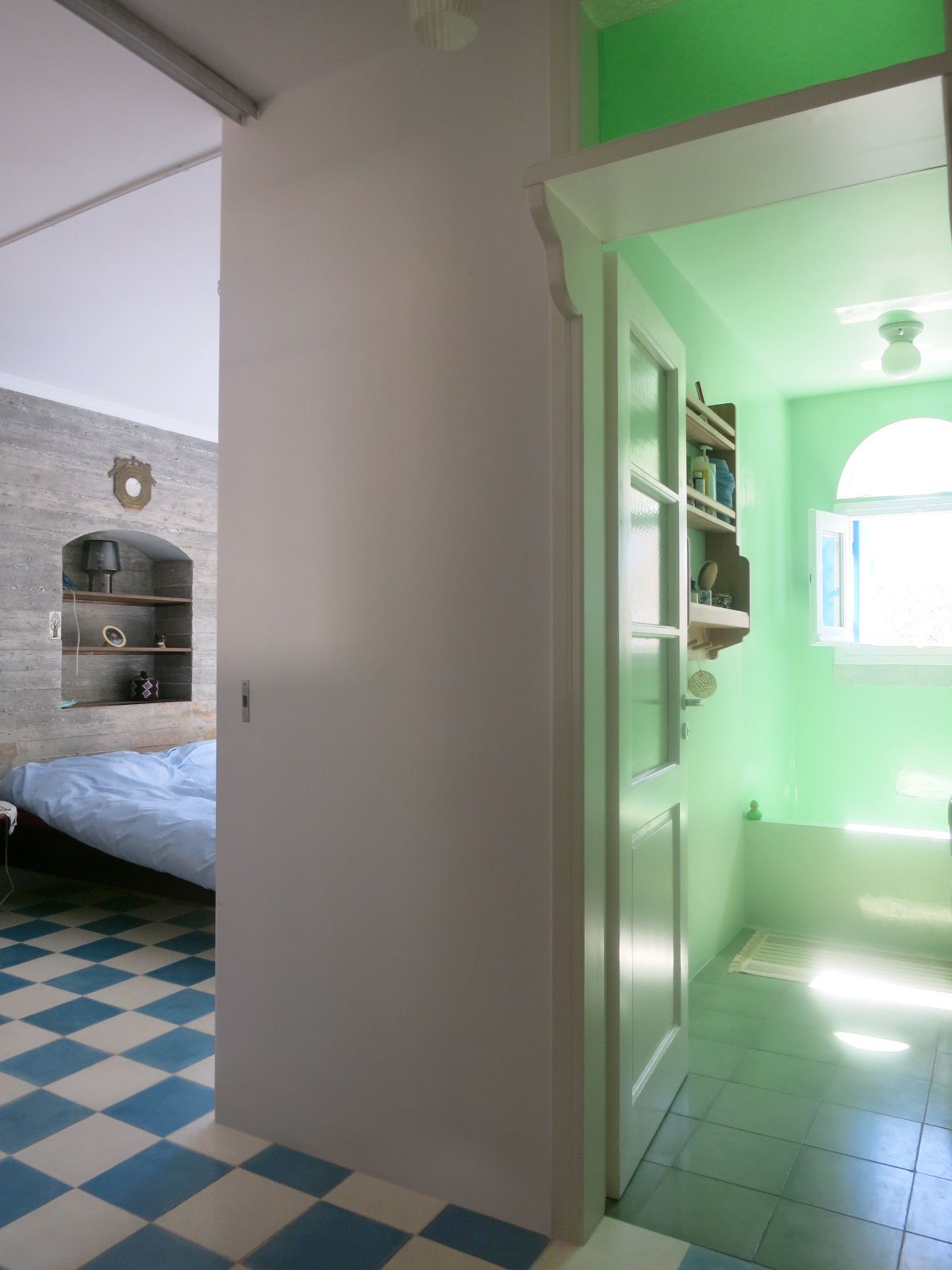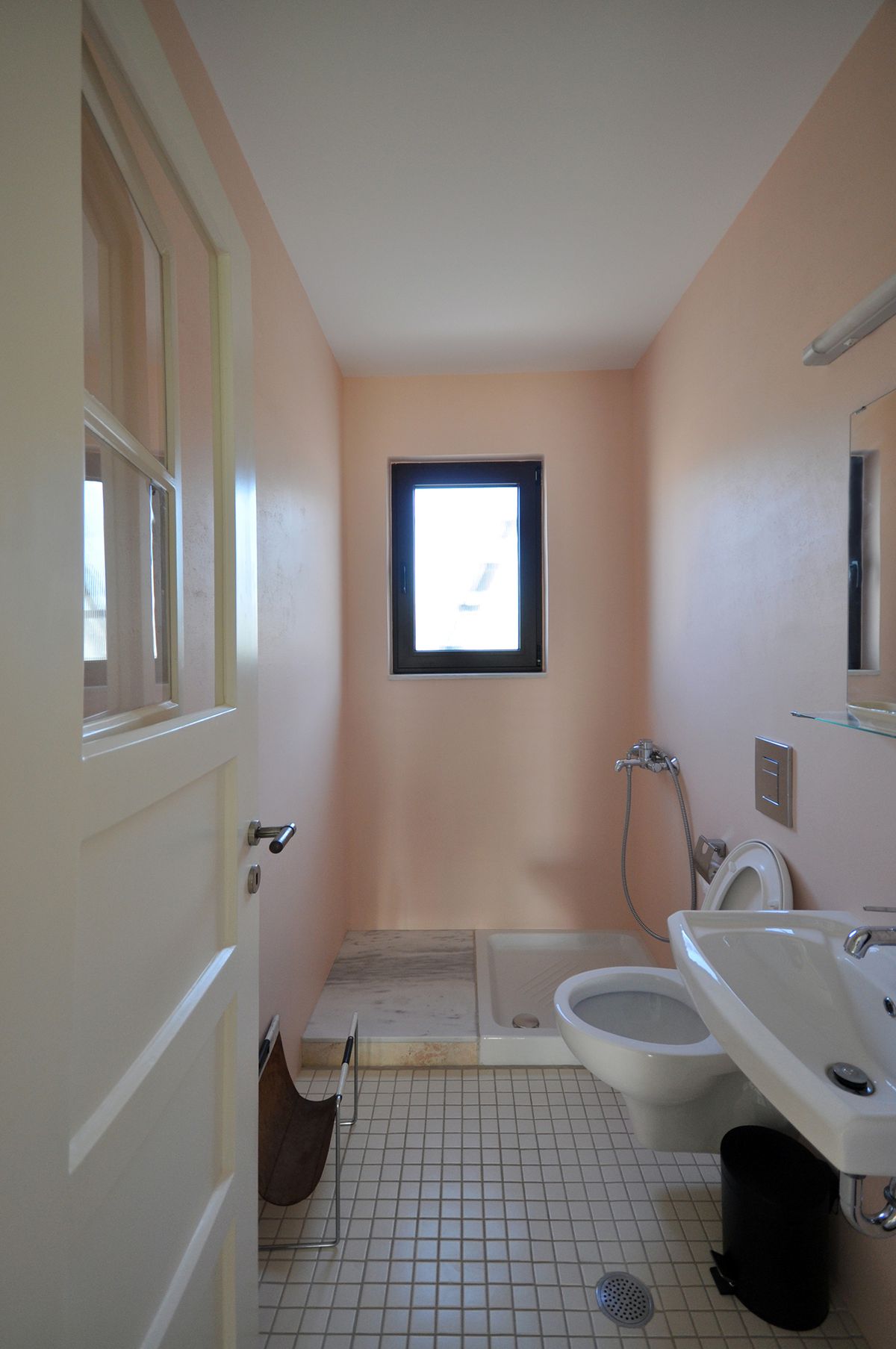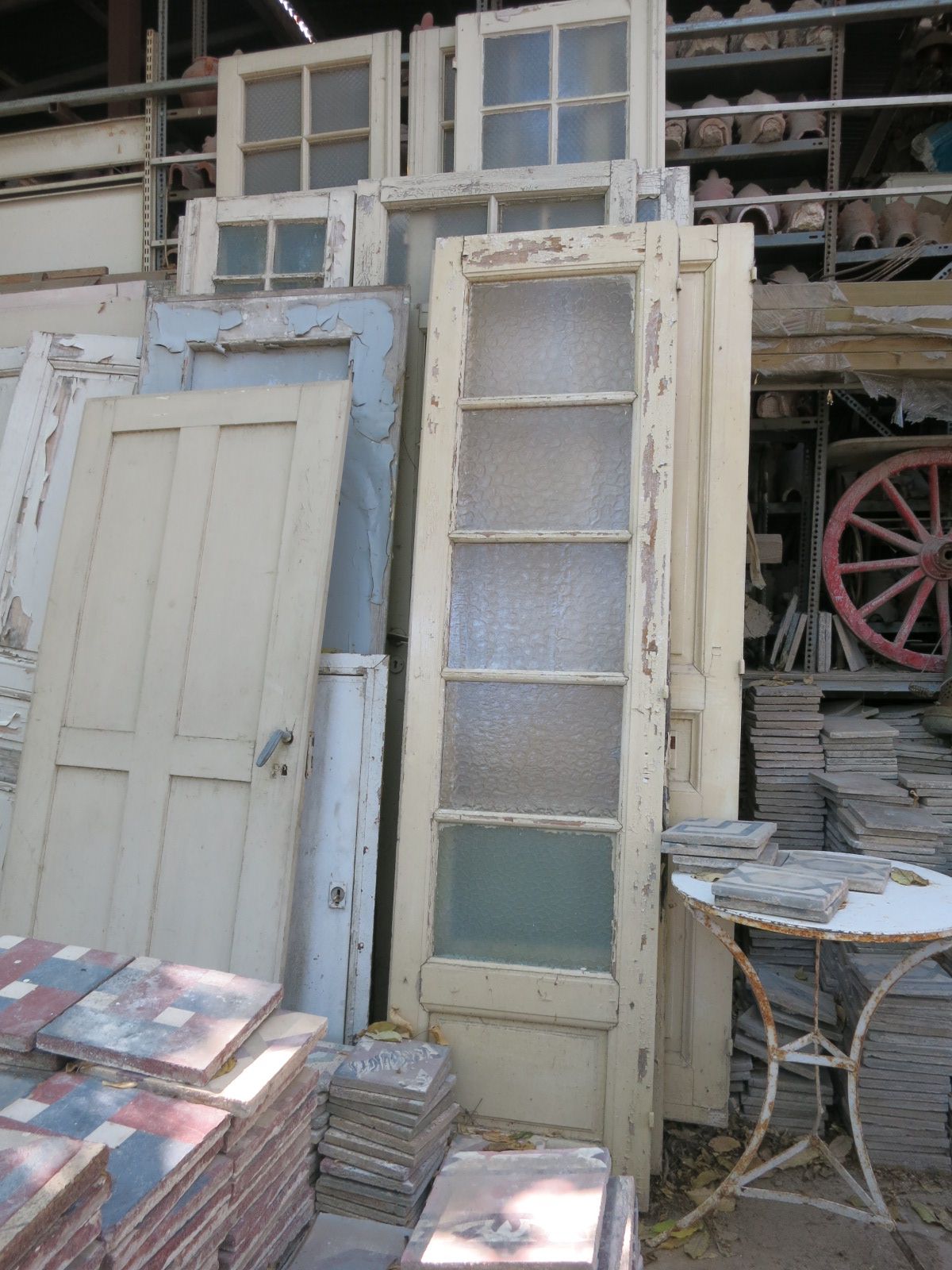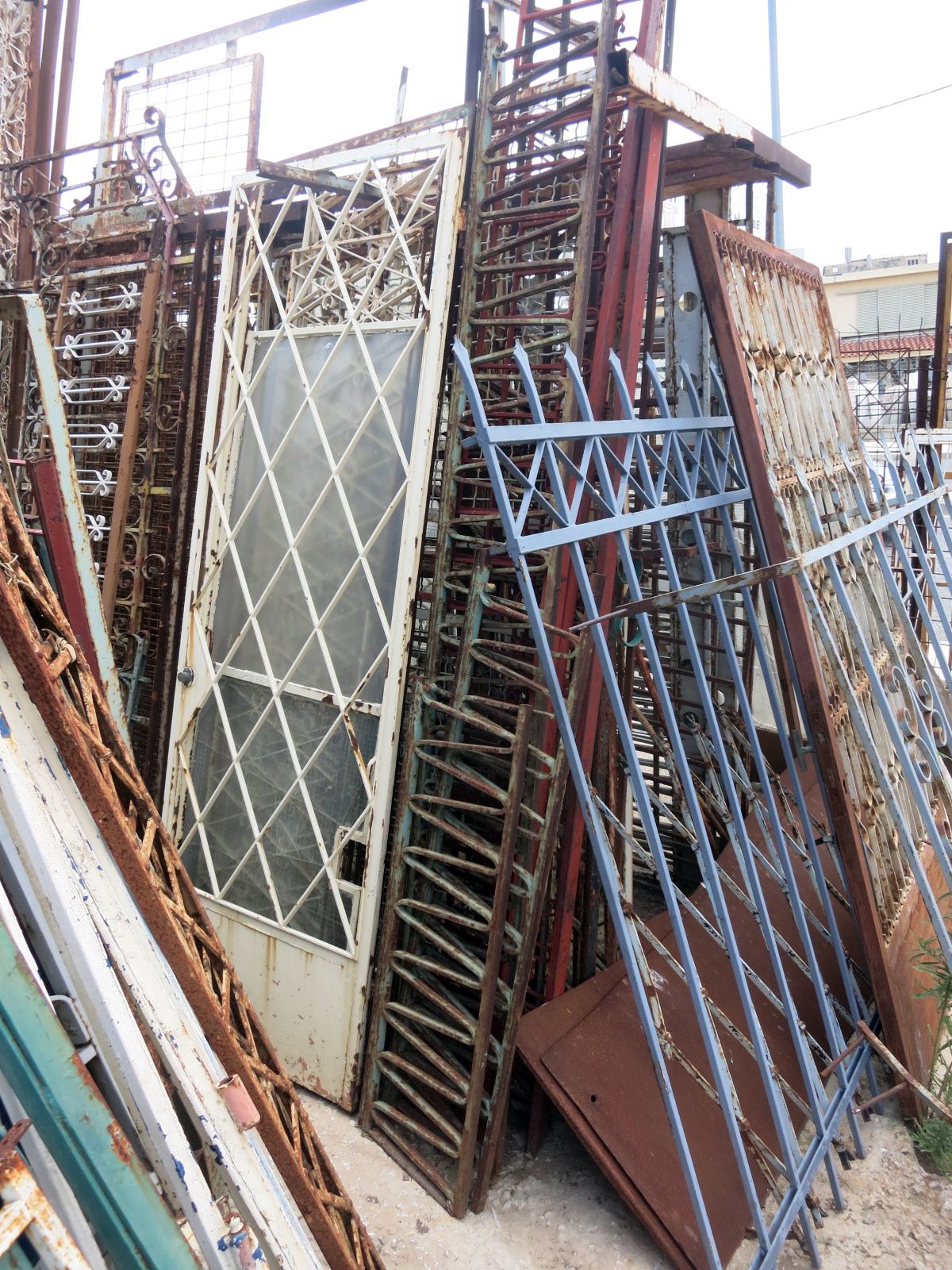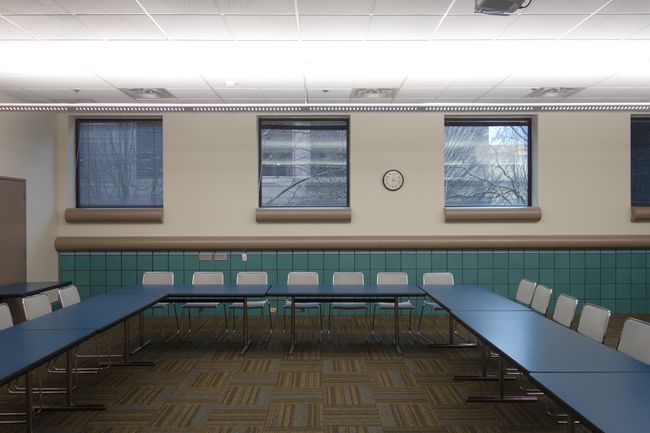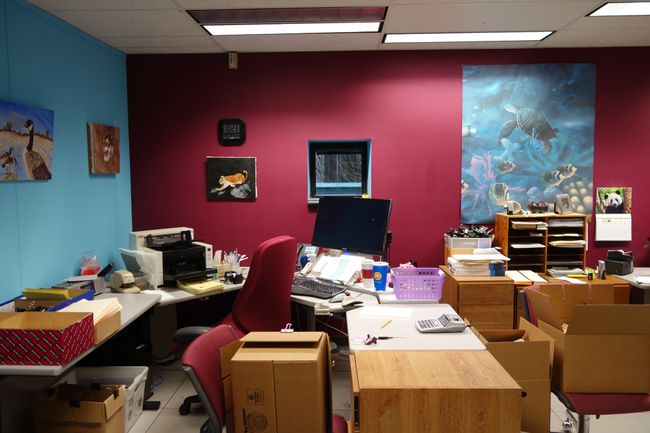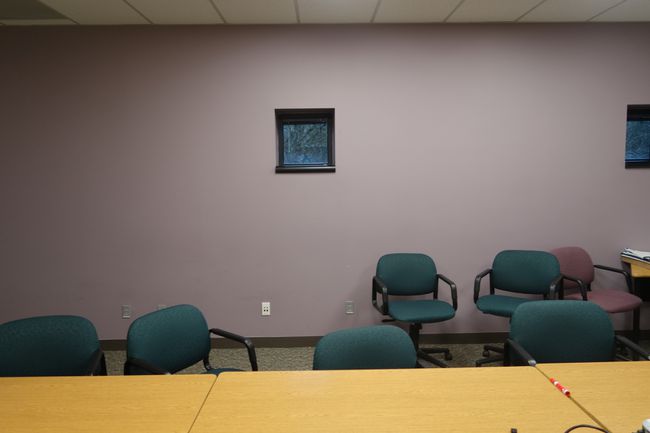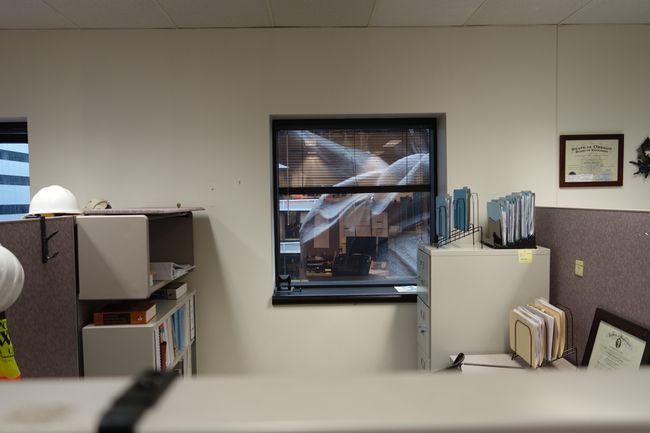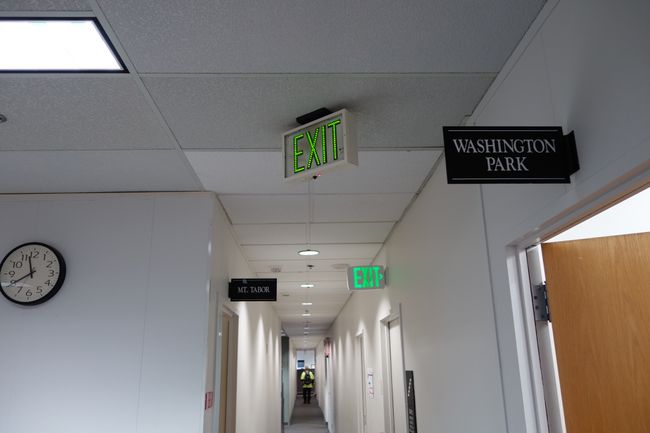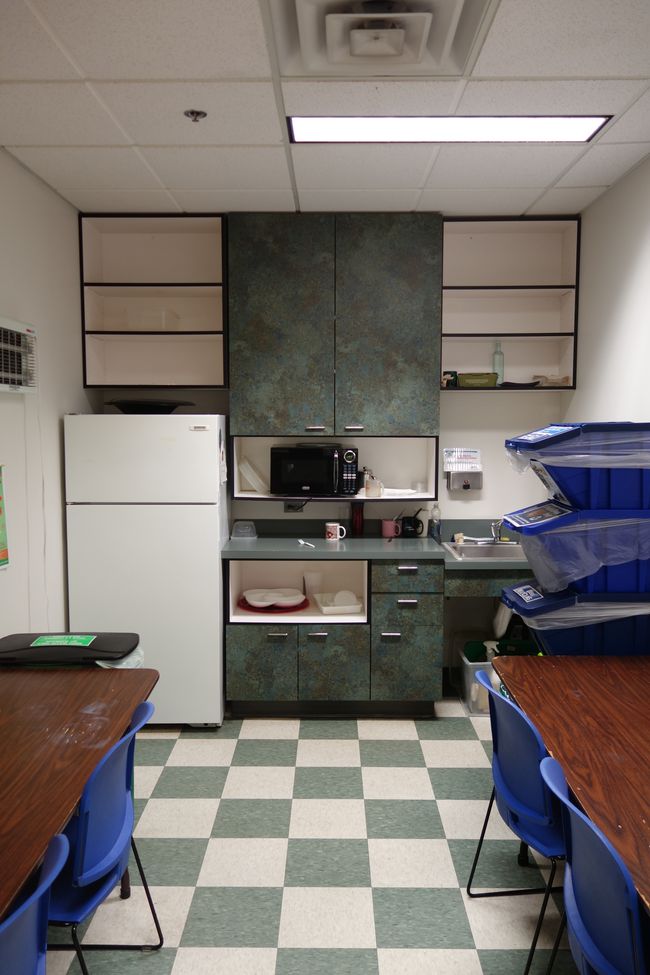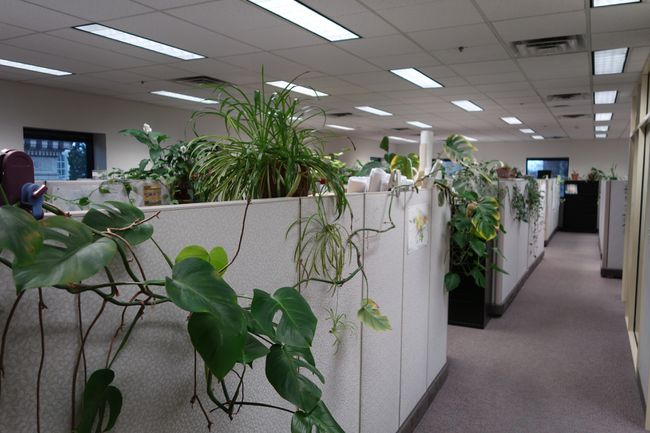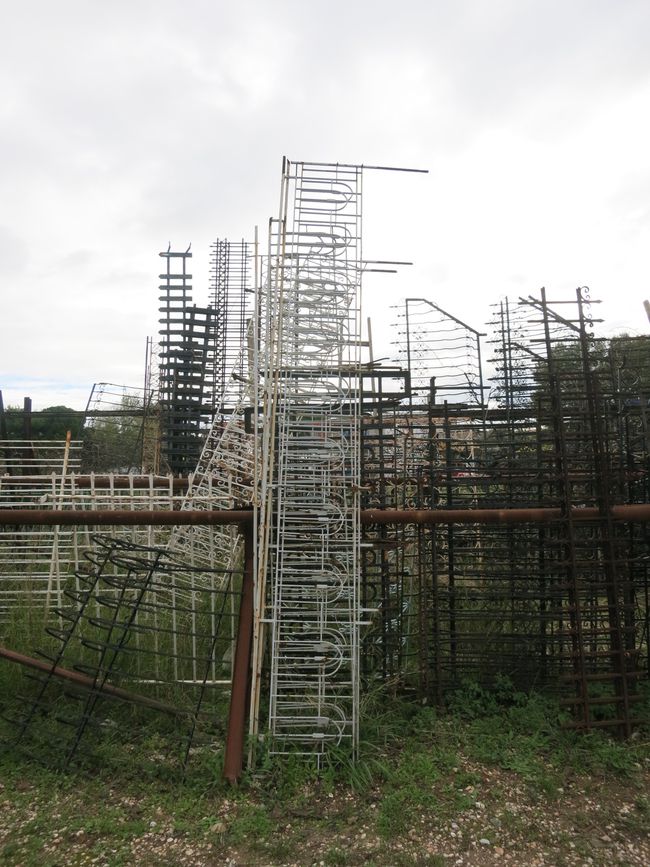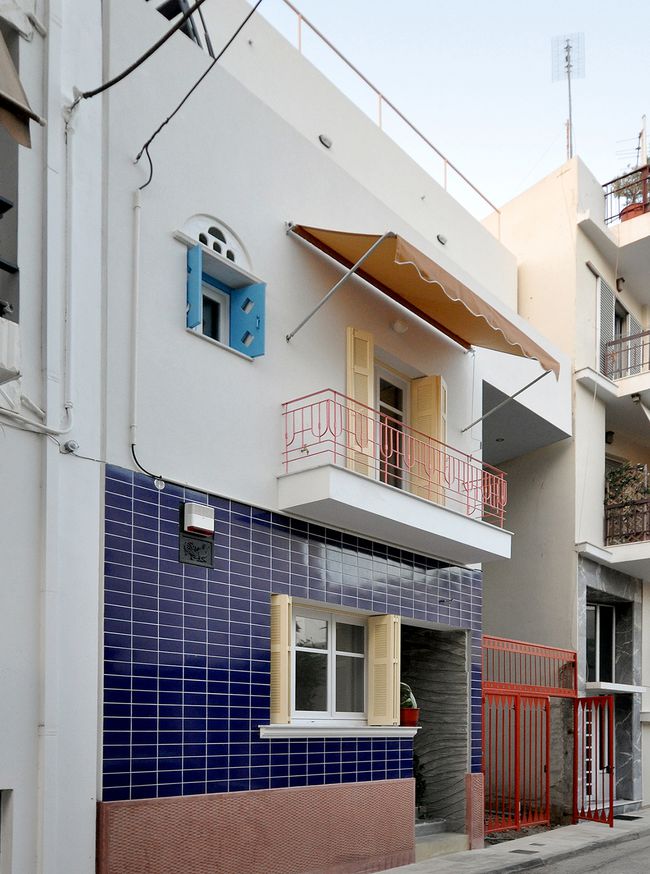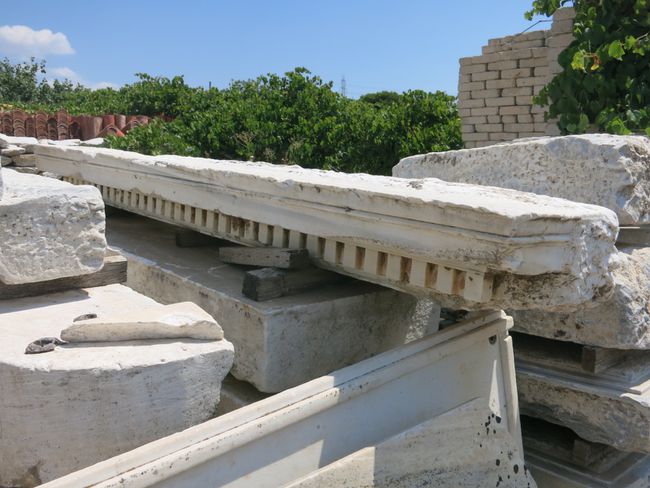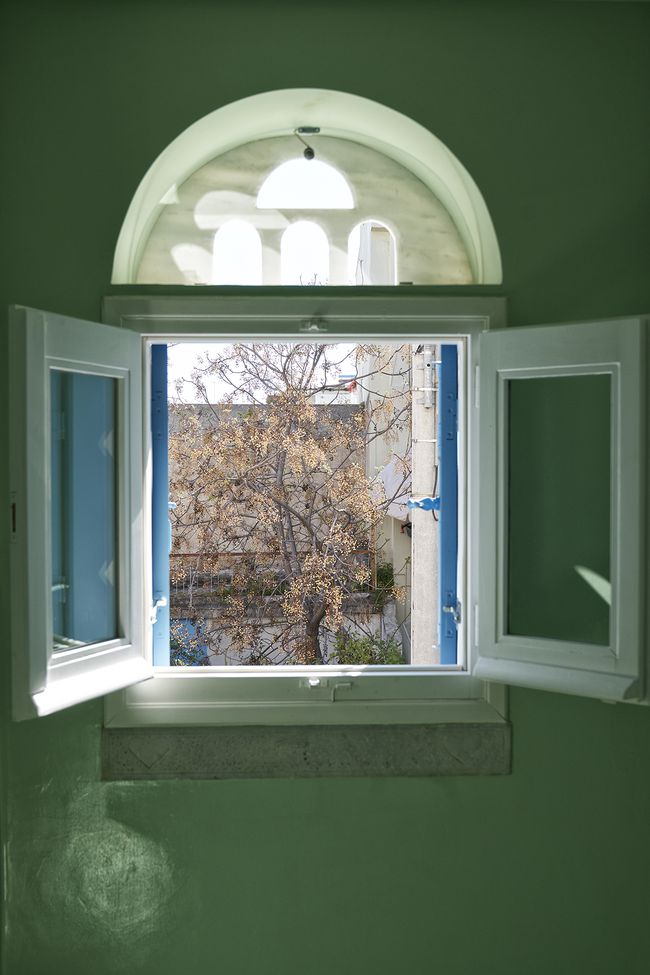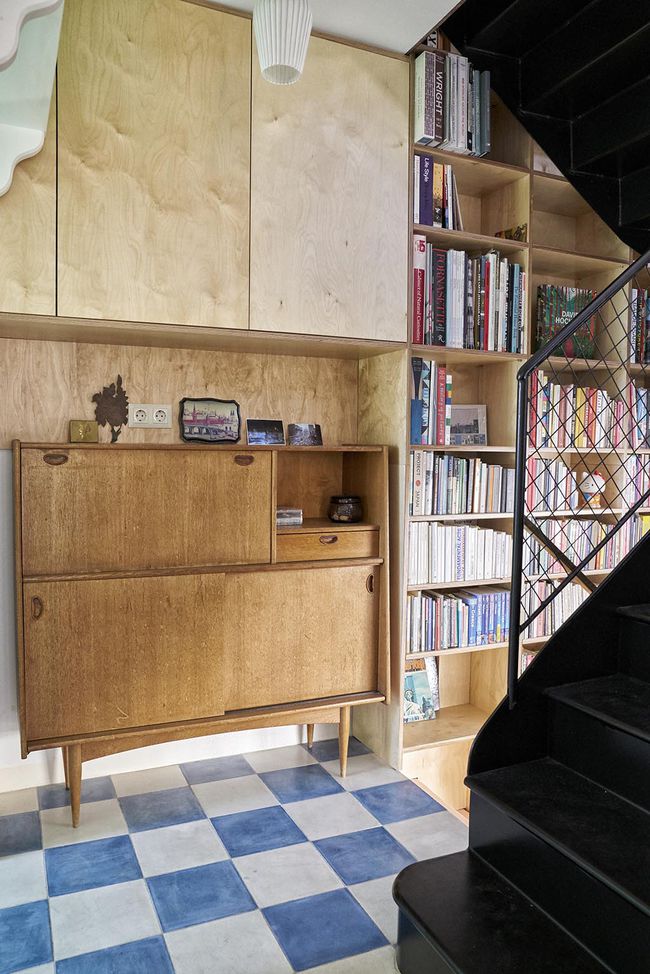Specifying from a Broader Catalogue
A conversation between Giovanna Borasi, Maarten Gielen, and Konstantinos Pantazis
With an instinct that the dialogue would be productive, Giovanna Borasi introduced Maarten Gielen of Rotor and Konstantinos Pantazis of Point Supreme and invited them to discuss their practices’ approaches to reusing and reused materials.
- GB
- An interest in materials has threaded through the work that the CCA has done for a while. In the 2005 exhibition Sense of the City, for example, an entire room was dedicated to asphalt as an omnipresent, banal surface of the city. The CCA has also been collecting trade catalogues, especially from the period between the fifties and the seventies. These are just a few examples. So we’ve been interested in the experiential qualities of materials, but also their technical description and distribution. And then in other projects, like Sorry, Out of Gas or Actions, we’ve looked at how materials might be reused, as part of a larger way of redefining how architecture might be created.
Both your practices have a certain relationship with materials, but you approach this in different ways. For Rotor, it seems like you’re thinking about how reuse can also establish a different economy—not only of the materials themselves, but also in terms of production. At the same time, I think Point Supreme’s work in the last few years makes using things that are already available an intellectual proposition—maybe also because of the pressure of a certain condition.
So I thought it would be interesting to ask the two of you about the idea of not just reusing materials, but doing it in a particular way to develop a new architecture. Not an easy aesthetic of reuse, I mean, where the materiality becomes very explicit—as in a table with recycled plastic bottles, and therefore that thing is just about plastic bottles. But actually reusing materials to rethink a way of producing architecture, and consequently, what the aesthetic of that could be. - KP
- I think the way that Rotor engages with materials does change the way that we think about architecture very holistically, and it’s obviously very relevant at the moment. In our work, it’s probably a little bit less systematic, a little bit more improvised.
We ended up using materials in the way we do naturally and progressively, without realizing it. It was a kind of subconscious process because of the circumstances we’ve found ourselves in. For most of our built work, which is here in Greece, we have very limited means. So we had to become inventive. We would start to find materials in salvage yards, for example, or in the streets—things that others were disregarding. And we started to realize that in our built work we actually appreciated the things we were finding more than the things we would invest in with our limited budget.
We invented a way to use these things, either found or bought—a way where the act of reclaiming didn’t matter, or didn’t even show. So in our projects we often can’t even remember if something was actually found or bought.
This relationship between new and other materials became very interesting for us, and we started to manipulate it. That’s what happens with our later work, where we are more conscious of it—we’ve become very comfortable creating the relationships between different kinds of things. So in the Petralona House, which we finished recently, and in the totems, the project which is a kind of mirror of it, the point is that we are showing the widest range of relationships between materials that have some kind of contrasting properties; artificial versus natural, handmade versus market produced, original versus copy, cheap versus expensive, or maybe even more sophisticated categories, like materials or objects that are modular or singular versus materials that are parts of a whole. These relationships of differences become a critical part of the project.
Read more
- MG
- We also started in a very informal way, working with stuff our friends had laying around, finding stuff in the street. But then there was a limit to the scale of projects that we could do. Four or five years ago, we won a public commission for MAD, a design and fashion centre in Brussels. That meant it was going to be built by a contractor who needed to reply to a public tender, and so on. Basically, we realized that we had no means of scaling up our practice into something that goes beyond the private house or the direct commission.
At that point, we had to ask ourselves what kind of office we wanted to be. We took it as a challenge, and in a way, I think the agenda changed. What was first perhaps a kind of spontaneous and logical thing to do became super difficult. It’s easier to convince clients to put money into a new product than to convince them that they need to pay you more money to go and find the material. Even if it’s cheaper in the end. Everything is set up against it.
In a way, what we liked is the capacity to provide a kind of excuse for changing the relationships and the division of responsibilities between the traditional stakeholders of the building process. The engineer calculating the stability of the structure cannot refer to standard schemes. The planning authority doesn’t—cannot—follow its regular procedures. The client needs to think about acquiring the material in a different way. Everybody’s forced to think up new tools, new procedures, new forms of liability coverage, and so on. And I think this is probably the strongest point of our agenda. It’s a way of disrupting the typical setup of a construction process. In the end, we realized that it’s most often not more expensive, but it’s also not that much cheaper, if you count the working hours of everybody involved.
And I’ll end with what you were referring to, this kind of idea of a vocabulary—that materials are not neutral. That’s a basic idea. But still, I think we share the feeling that you can use that vocabulary to convey meaning in some other way than by just referencing other architecture, and that the material in itself has a language. - KP
- Yes—we are operating in different circumstances. You’re talking about a typical construction process, but in Greece, there’s basically no such thing; the construction process is typically small and improvised. Usually what happens is that people just build a house on their own. This is true in our work—even at the scale of a whole house, such as the Petralona House. I think you can see it in the result. And the things you find in salvage yards here are things that somebody made or found when he was building fifty years ago, without the help of any professional. So that creates a whole different range of possibilities.
- MG
- Yes, but maybe it’s not only a geographical thing. There are parts of Brussels that are probably closer to the situation that you experience in Athens, but those are just not the areas that we are working in.
But maybe I should make an interlude. If we wanted to bridge this gap between the kind of standard professional practice and what we were doing before that, we had to create a series of tools, right? We needed a way to shift from relying on technical descriptions that architects can copy-paste to developing a kind of a guide to where to find certain types of materials. So three years ago we started our own business in deconstruction and selling material parts.
In a way, this business connects places in Brussels that are probably closer to the economic situation in Athens with places in Brussels that are absolutely nothing like that. And the deeper you go into the corporate world—and the clients that are building in a formal way in Brussels today are often very large corporations—the more difficult it is to talk about materials. They become more and more abstract.
First they become lines in a CAD file, and in the end they become numbers that refer to codes that refer to other codes. There are layers and layers and layers of abstraction. So we take the materials from within a system that cannot deal with materiality, and we bring them into a context where they can have a physical existence.
The salvage yard is an extreme example of that, because the only way to buy materials there is to go there and measure stuff. Our website is already a step in between, where you have some measurements and some idea of what to buy but you don’t know the grading of the steel that was used in a certain piece. Which most of the time you don’t even care about, but anyway. It’s about how these materials in different contexts might exist in a totally different way.
- GB
- But in this sense, it seems like somehow both of you add a kind of new constraint to the work of the architect. To use a particular material, regardless of whether it’s from a junkyard or new, you have to find a design solution that already takes into account that you will have to absorb all the logic and history that comes along with that material.
- MG
- From our point of view, when it starts feeling like a constraint there is something wrong. Rotor is trying to create an infrastructure where using an existing material is less constraining than having to pick a new material from a catalogue. Actually, with a lot of my colleagues who are designing things, when you give them a catalogue with endless possibilities of interior partitions, they’re totally stuck. Whereas if the material was there on site and it’s blue—well then it’s blue, you know? Maybe you need to compensate for the blue with something else. But if you don’t have the infrastructure for it, if you don’t have the kind of language for it as a designer, then you work another way. It’s not about a Protestant idea of saving carbon or trying to minimize impact, or a system of guilt where using reclaimed materials is a moral duty. It’s just that when you set up a few tools, a few connections, all of the sudden you have other options. Which is very liberating, I think.
- KP
- Yeah, I agree. Like Maarten hinted at, it has more to do with how you work as a designer. In our case, this way of working with materials liberates the process; it makes it somehow more fluid—and also more exciting. The role of the architect changes for sure; the architect needs to become more flexible, more easygoing, because of course things change, and not in a way that you completely control. Things are not going to be exactly as you have in mind in the beginning. But as I said, in our case, and I’m sure for Rotor, that’s something enjoyable.
Sometimes I think it would be interesting to show a project as it was initially conceived and then how it’s finally realized after all the different sources get introduced, which are, of course, a little random at first. The Petralona House was designed as something very different—the openings, the windows, the doors were different. All of these things had to be redone after specific doors were found.
Going back to what you said, Giovanna, the history and richness that these objects bring to the project are far from any sense of constraint.
- GB
- Right, the word constraint probably feels too negative. I’m just saying that for me, working this way means, as you said, Konstantinos, that you also need a certain set of skills. In Greece, you already know that whatever you do deals with a past, and it’s normal that architecture integrates what was there from centuries ago, and somehow it’s not so distant from a new architecture. But the language and the materiality don’t need to be the same. So I wonder how, in your case, you imagine a contemporary architecture that integrates things that are also vernacular. I would say that the terrace of one of the balconies of the Petralona House, for example, is something that you take from traditional Greek architecture.
You have no problem doing that, and in a kind of pop way. What I mean is that even the idea that you work with sources that come to you, and then you have to find reasoning and also language to use them, defines a different role for the architect. - KP
- Yes. It is very important for us to think about Greek vernacular architecture, and especially island architecture. There are incredible things you see when you travel to the islands—of course; architecture done without architects. These kinds of projects—houses, usually, little churches, or whatever—are made by locals with very limited resources, but at the same time, they have an inventiveness and an imagination. It’s even beyond design—it’s just claiming things and using them in a way that makes sense. And there’s a very strong—I won’t say aesthetic, but there’s a very strong language that is born from this. There are very different types of such houses or constructions, but they are all parts of a system.
If you pay attention, you start to understand how this kind of architecture works and what it creates, and what effects it has. My partner Marianna and I realized that as architects we respect this kind of architecture more. And because we have been looking at and studying this kind of thing for maybe a decade now, progressively we started to learn from it.
- GB
- Maarten, this makes me think about something that I understand you’re also interested in, which is when you recuperate a piece of a building, it’s not just about the material itself, but it’s also about how that material came to be—the way it was put together, the logic of its construction.
- MG
- Maybe before going into that, I want to say that I feel very strongly that you cannot make an opposition between a situation where you’re working with new materials and thus neutral materials and a state where you’re working with recuperated materials, which are thus political or tainted or embedded in history. In a talk I gave at the CCA, I made a link between coal combustion and plasterboard. Plasterboard arrives in the seventies and eighties as this miraculous material that is used everywhere, but which is very much related to processes of energy production that are happening somewhere else. In architecture you’re making a connection between these two worlds.
Two or three times a week, I go into buildings that are to be demolished. And I don’t even need to see the facade—you can put me in the middle of the building and I can tell you when it was built within five years, more or less. That’s just by looking at the power plugs. A lot of the materials that architects use today that they think are neutral are totally not neutral. They are very much embedded in the context of today, and most of the time, in a lot of interior architecture, these zeitgeists become the main message and the main feeling that a space has. Reusing materials and picking materials from a broader catalogue throughout time gives you a lot more liberty to define the feeling you want. It’s the same as how a set designer uses materials in a more liberal way than an architect would. So that’s one thing.
For the second part of your question, about using materials almost as systems or design components with traditions and histories, maybe what we are fighting against is the Starbucks expression of reuse—cheap, coloured wood or whatever as cladding, and then some rusty chandeliers. Today—and it’s quite fascinating to see—we’re taking materials out of corporate headquarters from the eighties and nineties that are finished in marvellous types of veneer and marble and granite, and the projects that are being put in those same buildings have this Starbucks rusty, rough-wood aesthetic. If it’s just replacing one type of aesthetic with another, in five years from now we will have to do something else. We are looking for a form of continuation, or a language of reuse that is much richer than this barnwood aesthetic. And making explicit references to works of others, or to manufacturing standards or to a certain type of detailing is, I think, a way to try to do that.
- GB
- Have you coined a new word instead of reuse?
- MG
- No. I mean, we’re making a case by organizing the availability of these sorts of materials. We are using reuse as a kind of Trojan Horse to rethink the construction process and the division of labour and responsibilities. The reason why people accept it—the reason why a planning authority is willing to give it a chance—is because of sustainability. Whatever that means. There’s proof that we are living in a world that is in material crisis, so a lot of people are ready to rethink the way they relate to materials, and within that context, I don’t think we need to take too much critical distance from words like sustainability, reuse, and recycling. Whatever opens the door is a good way of starting the process.
- GB
- But then let me put forward a provocation. In ten years, when the new crisis will be something besides sustainability, or for you, Konstantinos, there will be a different economic situation in Greece—the moment that you don’t have that pressure anymore—will you continue with this language?
It’s a little bit like what happened in the seventies with the oil crisis—the moment that the condition changed and oil was available again, people gave up on the idea of a cultural shift. I mean, I think I know your answers, but it’s more of a provocation. - MG
- From my point of view, the crisis that we are now dealing with is a continuation of the one we had in the seventies, and because it didn’t actually go away, there wasn’t much reason to change. It’s like asking an architect, “Will your architecture change if gravity changes?” Yeah, sure, it will. But did you know we are running out of sand? The most banal of resources. We’re not talking about oil. At a moment when the whole world is starting to build, we’re running out of everything.
- KP
- For me, it’s also about what Maarten said earlier; using materials with their own histories is also a fantastic way to get rid of the uniformity that the resources of our age inevitably have. So it’s something that we would have done anyway. The crisis or the context we find ourselves in makes it more extreme, I guess. Or more easy—inevitable. But it’s cultural rather than economic. Think of the example of the islands. It doesn’t have to do with poverty, necessarily; it has to do with criteria, priorities.
- GB
- Are there any questions that you want to ask each other?
- MG
- Well, Konstantinos, I must admit that I’ve really only seen imagery of your work on the internet, but the more we talk the more I think there is a kind of link between us. What you were describing, using a broad palette of materials in a house—the natural, the artificial, the rich, the poor—is exactly what we did in this fashion and design centre. We quickly realized that we would not be able to work with reclaimed materials, so we made a palette of fifty interior finishings that all had these kind of contradictions, except that we chose them all in a grade of white. So we have Carrara marble next to some sort of white linoleum. Our pitch for the project was that we were designing a backdrop, and that we’re used to a backdrop being a neutral white—just as we think of materiality as somehow invisible—but that we would try and start to pervert this so-called neutrality.
- GB
- I think the MAD project and the Petralona House make an interesting pair. Even if there is this kind of common interest in introducing different materiality that comes from different places—and maybe I’m simplifying, don’t be offended—I think in the kind of politic of Point Supreme, there is an idea of working on these oppositions, where things also work with a bit of surprise. As it is in the collages you’ve done of your projects, where you suddenly have things that bring in another time. And then in the MAD project these pieces all have their own qualities, but somehow they become one thing—even if it’s done with a similar approach.
- MG
- Well, I would agree, but one project is a house and the other one was designed as a fashion centre. You cannot give so much personality to a space that is designed for other people to express themselves in.
- GB
- Yeah, it’s an issue of program, but maybe also of scale. Konstantinos, do you think you’d have the same attitude that you had with the Petralona House in a project at a larger scale?
- KP
- We would. Like Maarten says, there are probably going to be differences with a different program or a different scale. But I think that it’s very much a cultural issue. I don’t think we could ever do an all-white palette. We’re probably just much more extrovert about it. I think that there’s a difference in the level of expression of the process, for various reasons. It’s interesting to think about why.
Maarten Gielen has visited the CCA a few times, for the event “Learning from… Brussels” in 2013 and for a lecture and an interview in the context of the exhibition The Other Architect in 2016. Konstantinos Pantazis gave the lecture “Learning from… Athens: Cooking with an Empty Fridge” at the CCA in 2016.



